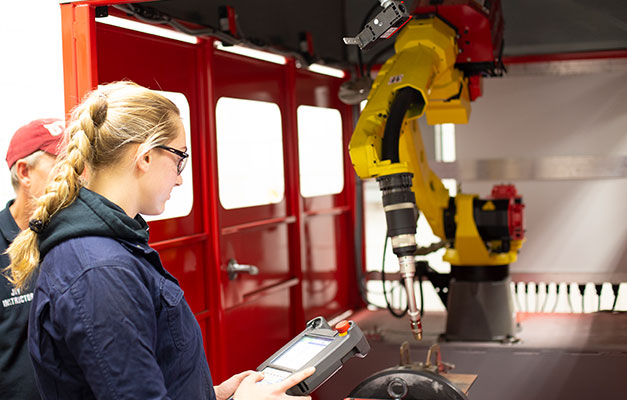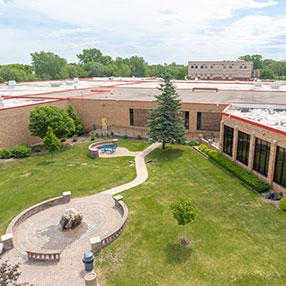The diversification of the welding industry impacts virtually every industry around the globe. From the depth of the world’s oceans to the far-reaching corners of outer space, there is a welding position for every hardworking, ambitious, smart individual who is ready and willing to constantly improve and strive for excellence.
Anoka Technical College offers multiple options in Welding education, including a certificate and a degree in Robotic & Laser Welding.
Why Study Robotic & Laser Welding at Anoka Tech?

Prepares students for AWS Certification

Hands-on training from industry experts

Work in a variety of industries
Industry & Career Outlook
Potential Jobs:
- Fabricator
- Welder
- Finishing Technician
- Robot Operator
Salary Information:
Median Wage: $28.07 per hour
Top Earners: $39.14 per hour
Information provided is for Minnesota. See current data at mn.gov/deed.
Other Program Info
Take a self-guided virtual tour of our campus to see what it's like to be a student at Anoka Tech. View program labs, common student spaces, campus offices and more.
Info for Current Students
Students must earn a cumulative 2.0 GPA or higher to be eligible for graduation from this program.
Robotic and laser welding careers are expected to grow at a substantial rate in the coming years.
The Robotic & Laser Welding certificate program at Anoka Technical College focuses on robot and laser safety, programming and operation. The certificate trains students in the fundamentals of ABB, Fanuc and OTC robot programming and language.
This certificate builds upon the other Welding programs offered at Anoka Tech.
Why Study Robotic & Laser Welding at Anoka Tech?

Prepares students for AWS Certification

Hands-on training from industry experts

Work in a variety of industries
Industry & Career Outlook
Potential Jobs:
- Fabricator
- Welder
- Finishing Technician
- Robot Operator
Salary Information:
Median Wage: $28.07 per hour
Top Earners: $39.14 per hour
Information provided is for Minnesota. See current data at mn.gov/deed.
Other Program Info
Take a self-guided virtual tour of our campus to see what it's like to be a student at Anoka Tech. View program labs, common student spaces, campus offices and more.
Info for Current Students
Students must earn a cumulative 2.0 GPA or higher to be eligible for graduation from this program.
Start Dates:
Fall semester: August
Spring semester: January



